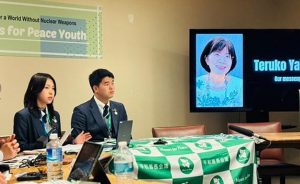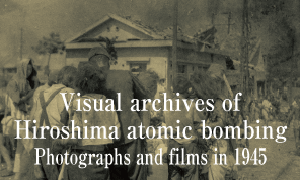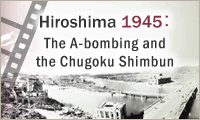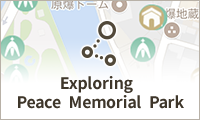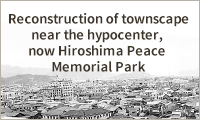Where we are now: Two years since Hiroshima Summit, Part 2: Power of young people
May 21, 2025
Strengthened desire to “convey tragic circumstances”
A-bomb survivors hope for power to deliver message
by Koji Higuchi, Staff Writer
Hanon Kawamura, 16, a second-year student at Hiroshima Nagisa Senior High School and a resident of the city’s Saeki Ward, felt a mix of accomplishment and bewilderment. “What is the meaning of our activities?” asked Ms. Kawamura.
From April to May, she had visited New York in the United States as a representative of senior high school students in Hiroshima Prefecture in conjunction with the holding of the first Preparatory Committee of the Nuclear Non-proliferation Treaty (NPT) Review Conference. During the visit, Ms. Kawamura engaged in discussions with young people from countries throughout the world about efforts toward attaining a “world without nuclear weapons.” She also spoke about the tragic circumstances of that day, August 6, 1945, experienced by Teruko Yahata, 87, a survivor of the atomic bombing who lives in the town of Fuchu-cho in Hiroshima Prefecture. At the same time, she referred to the reality of diplomacy marked by nuclear weapons states criticizing each other involving the issue of nuclear disarmament.
Ms. Kawamura’s grandmother was one year of age when she experienced the atomic bombing in the area of Ujina-machi (in Hiroshima’s present-day Minami Ward). She survived because her family made the decision to not go that day to a photography studio located in downtown Hiroshima due to her great-grandmother’s poor health. Ever since Ms. Kawamura was shocked to first hear the story from her mother as a child, she has considered the atomic bombing to be a deeply personal matter for her.
When the summit meeting of the G7 (Group of Seven industrialized nations) was held in Hiroshima City in May 2023, Ms. Kawamura was encouraged by the leaders’ pledge to pursue “a world without nuclear weapons.” Three months later, she participated in the Children’s World Peace Summit, a gathering organized by a number of general incorporated associations that was held in Japan’s parliamentary Diet. In the summer of 2024 in Hiroshima City, she participated in a training program with the United Nations Youth Leader Fund for a World without Nuclear Weapons. Through discussions she engaged in with young people from India and Thailand, she came to believe that education is the most important element in the effort to abolish nuclear weapons.
One of the aims of the Hiroshima Summit was to create opportunities for more young people from the A-bombed city of Hiroshima to raise their voices for peace. Masashi Mizobuchi, 59, the Consul-General of Japan in Chicago and a native of Hiroshima’s Minami Ward, served as deputy secretary-general of the G7 Hiroshima Summit Secretariat in Japan’s Ministry of Foreign Affairs. From the time preparations began, Mr. Mizobuchi said repeatedly, “The significance of holding the Hiroshima Summit is that young people will pass on the importance of peace to future generations.”
Himari Ideno, 19, a second-year student at Hiroshima University and a resident of the city’s Asaminami Ward, is among those who, after the Hiroshima Summit, strengthened their resolve to convey the tragic circumstances caused by the atomic bombings. In March 2023, Ms. Ideno discussed peace and sustainability with young people from the G7 nations at the Hiroshima G7 Summit Junior Conference, organized locally by both the public and private sectors. The conference compiled a six-page report of the conference outcomes addressed to then-Prime Minister Fumio Kishida. She now serves as a Youth Peace Volunteer, guiding visitors from overseas at Peace Memorial Park, located in Hiroshima’s Naka Ward.
A-bomb survivors are placing their hopes in the power of young people. On May 18, Kiyomi Kono, 94, a resident of Hiroshima’s Naka Ward, shared her experience in the atomic bombing with around 60 Youth Peace Volunteers. “Nuclear weapons created by human beings should be eliminated by human beings. I hope more and more young people around the world will speak out in the same way,” said Ms. Kono.
As the global situation surrounding nuclear weapons has become increasingly tense even after the Hiroshima Summit, Ms. Ideno said, “Each of us has to think about concrete steps for how nuclear weapons can truly be eliminated.” Ms. Kawamura is horrified by the controversy surrounding nuclear weapons, something she sensed during the preparatory committee, but she continues to move forward positively. “I’m only one citizen,” she said, “but I’m not powerless. I’ll continue thinking about what I can do.”
(Originally published on May 21, 2025)

